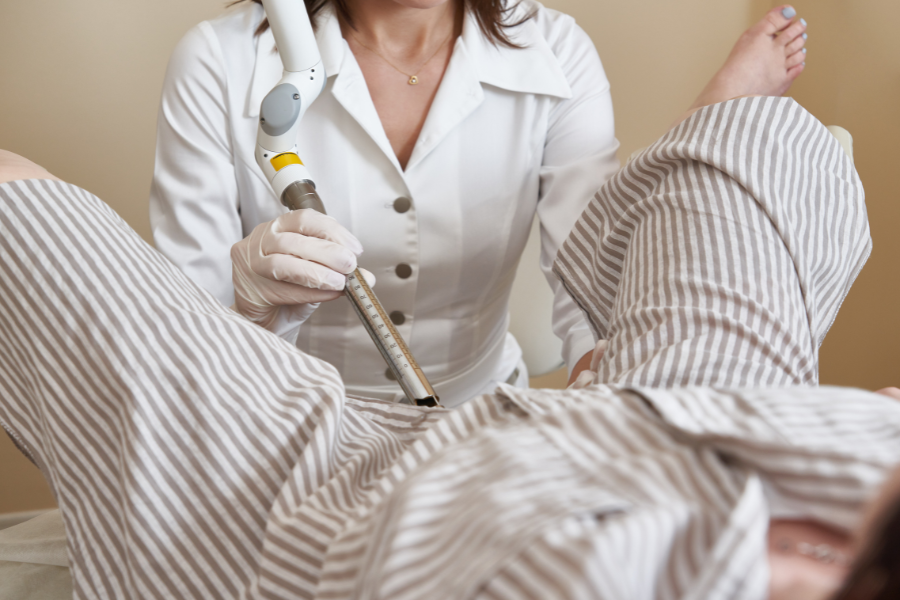
According to Dr. Tahery, an expert in diagnosis and treatment of vulvar and vaginal disorders, millions of women deal with vaginal laxity, or looseness of the vagina. Unfortunately, stigmas surrounding the discussion of issues like this force many to deal with the negative aspects of vaginal laxity in silence. But you don’t have to settle for undesired looseness.
This problem is more common than most realize, affecting most women at some point in their lives. It’s not just a cosmetic issue. Laxity can negatively affect sexual function, bladder and bowel function, impacting your lifestyle, self-esteem and overall quality of life.
Fortunately, there are ways to address it. Vaginal tightening treatments and procedures are available to help you regain your confidence and get your life back.
Causes Of Vaginal Laxity
As per Dr Tahery’s experience, there are many potential causes for vaginal looseness. One of the most common is trauma during childbirth. Estimates say that roughly 20 percent of new mothers have vaginal laxity three months post-birth. In about 12 percent of women, the issue persists beyond 12 months. It’s common for looseness to occur after childbirth due to stretched tissue.
Many women also seek vaginal tightening procedures when experiencing laxity caused by pelvic floor disorders. Looseness can also be a problem that comes with aging. After menopause, hormonal changes cause many noticeable changes in the body. One of them is less elasticity in the vaginal lining caused by lower estrogen levels.
RELATED: Vaginal Atrophy Treatment Options
Ways To Tighten Your Vagina
No matter the cause of laxity, several treatment options exist to address the issue and restore elasticity. What’s right for you depends on your unique case. That’s why it’s important to seek professional care. After a thorough examination, Dr. Tahery, a urogynecologist expert in treatment of vaginal and vulvar disorders, can identify potential causes and develop a vaginal tightening treatment plan that addresses your needs.
There are some of the ways to tighten the vagina:
Laser Vaginal Tightening
One treatment utilized by Dr Tahery in mild cases of vaginal laxity is laser vaginal tightening. It’s a form of vaginal rejuvenation that doesn’t require surgery or substantial downtime. It’s an outpatient procedure that triggers improvements from within, using your body’s natural biological processes.
It’s not a one-and-done treatment option. Laser vaginal tightening typically requires multiple sessions, the number of which varies based on your needs. However, many women experience great success.
This vaginal tightening treatment works via lasers and radio frequency waves. Providers use equipment that produces energy to stimulate the thickening of vaginal tissue. Lasers trigger your body to produce more collagen and elastin while stimulating blood vessel growth.
Surgical Repairs
Surgical techniques developed by Dr Tahery can be used for more advanced cases of laxity. These procedures address the damaged muscles and connective tissue and are more extensive and may require some downtime. However, the results are often very impressive and don’t require multiple repeat sessions. There are several techniques used to tighten the vagina via surgery.
Dr Tahery has developed anesthetic protocols allowing these operations to be performed under local anesthesia.
Vaginoplasty procedures involve tightening the muscles inside the vagina. This surgery can also repair the pelvic floor and vaginal walls. Many women choose to get vaginoplasty along with other cosmetic surgical procedures, such as labiaplasty or clitoral hood reduction. Dr Tahery’s techniques have helped many women reverse the damaged vaginal and vulvar tissue and restore health and function.
Hormonal Treatment
For women experiencing vaginal laxity due to menopause or other hormonal issues, this option may be the right solution. Hormonal treatment aims to increase estrogen levels. Higher estrogen levels can thicken the tissue on the vaginal walls by boosting your body’s production of elastin and collagen.
Hormonal treatment may also address other menopause-related issues. For example, it often generates more natural lubrication to address vaginal dryness and discomfort. The most common methods for hormonal treatment include oral hormones, topical products, or pessaries.
Non-hormonal Treatment, SILK
Dr Tahery has formulated a non-hormonal treatment option, SILK, with a similar benefit profile as hormone therapy without the side effects associated with hormones. Ideal for women who can not or do not want to use hormones.
Pelvic Floor Therapy
Another way to tighten your vagina is through pelvic floor therapy. The feeling of tightness, especially during sexual intercourse, typically comes from the pelvic floor muscles around the vagina. Pelvic floor disorders, childbirth and aging can weaken those muscles.
Pelvic floor therapy can tighten your vagina by strengthening those muscles. There are many guided exercises you can do to experience vaginal tightening and a stronger pelvic floor over time. Therapy may also include stretches, electrical stimulation, biofeedback devices, and more.
If you’re struggling with the effects of vaginal laxity, turn to Dr. Michael Tahery. Dr. Tahery is a board-certified OB/GYN and a urogynecologist with more than 25 years of experience helping women like you. He is one of the most active gynecological surgeons in the Los Angeles area and is an expert in minimally invasive surgery and cosmetic vaginal surgery. Dr. Tahery takes a personalized approach, using his expertise to find the tightening treatment that’s right for you. Contact our offices today to schedule your consultation and explore your treatment options.